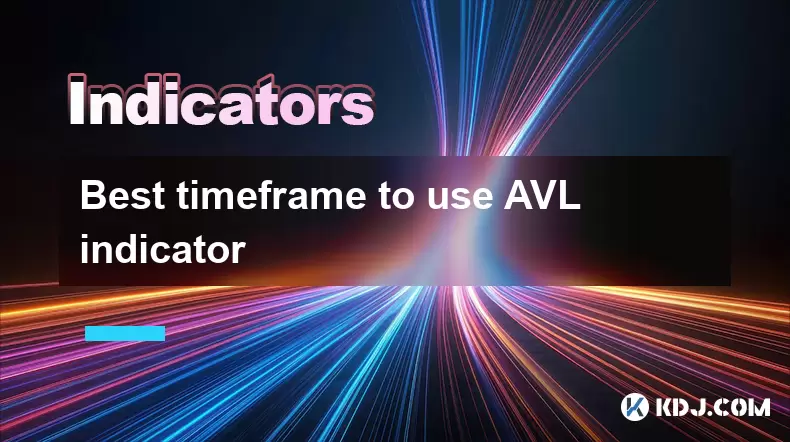-
 Bitcoin
Bitcoin $118100
-0.44% -
 Ethereum
Ethereum $3585
5.43% -
 XRP
XRP $3.434
5.65% -
 Tether USDt
Tether USDt $1.000
0.02% -
 BNB
BNB $743.8
3.89% -
 Solana
Solana $178.7
3.84% -
 USDC
USDC $1.000
0.03% -
 Dogecoin
Dogecoin $0.2381
12.81% -
 TRON
TRON $0.3270
3.62% -
 Cardano
Cardano $0.8315
4.93% -
 Hyperliquid
Hyperliquid $44.51
-4.42% -
 Stellar
Stellar $0.4710
1.52% -
 Sui
Sui $3.896
-2.51% -
 Chainlink
Chainlink $18.09
6.98% -
 Hedera
Hedera $0.2681
9.31% -
 Bitcoin Cash
Bitcoin Cash $516.7
4.83% -
 Avalanche
Avalanche $23.95
6.96% -
 Shiba Inu
Shiba Inu $0.00001490
5.67% -
 UNUS SED LEO
UNUS SED LEO $8.966
0.80% -
 Toncoin
Toncoin $3.294
4.39% -
 Litecoin
Litecoin $105.4
4.69% -
 Polkadot
Polkadot $4.356
5.30% -
 Uniswap
Uniswap $10.29
17.25% -
 Monero
Monero $327.9
-3.04% -
 Bitget Token
Bitget Token $4.942
4.33% -
 Ethena USDe
Ethena USDe $1.001
0.08% -
 Pepe
Pepe $0.00001348
2.17% -
 Dai
Dai $1.000
0.02% -
 Aave
Aave $320.8
0.58% -
 Bittensor
Bittensor $411.8
-4.07%
Best timeframe to use AVL indicator
The AVL indicator helps crypto traders gauge buying and selling pressure by combining volume and price movement, offering insights into market sentiment and potential trend reversals.
Jul 18, 2025 at 11:42 pm

Understanding the AVL Indicator in Cryptocurrency Trading
The AVL indicator, also known as the Advanced Volume Level indicator, is a technical analysis tool used by cryptocurrency traders to measure buying and selling pressure. Unlike traditional volume indicators, AVL incorporates both price movement and volume to provide a more nuanced view of market sentiment. In the volatile world of cryptocurrencies, understanding when and how to apply this indicator becomes crucial.
The AVL indicator combines volume with directional movement, which helps traders identify potential reversals or continuations in price trends. It's particularly useful for assessing momentum shifts in assets like Bitcoin, Ethereum, and altcoins that experience rapid price swings. However, its effectiveness can vary significantly depending on the timeframe selected.
How Timeframes Influence the Accuracy of AVL Signals
Timeframe selection plays a pivotal role in interpreting any technical indicator, including AVL. Shorter timeframes such as 1-minute or 5-minute charts offer more frequent signals but often come with increased noise and false signals. Conversely, longer timeframes like 1-hour or daily charts tend to filter out much of the volatility, providing clearer and more reliable trading opportunities.
- Short-term traders may find the 15-minute or 30-minute charts most suitable for day trading strategies.
- Swing traders typically rely on 1-hour or 4-hour charts to capture broader price movements.
- Long-term investors might use daily or weekly charts to confirm major trend changes.
Each of these timeframes affects how quickly the AVL responds to price-volume dynamics. Therefore, aligning your trading strategy with an appropriate timeframe enhances the signal quality and reduces the risk of premature entries or exits.
Optimal Timeframe for Day Traders Using AVL Indicator
For day traders in the crypto market, timing precision is essential. The 15-minute chart is often considered ideal when using the AVL indicator due to its balance between responsiveness and reliability. This timeframe allows traders to catch intraday moves without being overwhelmed by erratic price fluctuations.
To set up the AVL indicator effectively:
- Open your preferred trading platform (e.g., TradingView or Binance).
- Navigate to the indicators section and search for "AVL."
- Apply it to the chart and adjust sensitivity settings if available.
Once applied, observe how the AVL line crosses above or below key thresholds, signaling accumulation or distribution phases. For example, a sharp rise in AVL accompanied by rising prices indicates strong buying pressure, while a drop suggests profit-taking or bearish dominance.
Best Timeframe for Swing Traders Utilizing AVL Analysis
Swing traders who hold positions from several hours to days benefit most from analyzing the 1-hour and 4-hour charts. These timeframes smooth out short-term volatility and help identify stronger support/resistance levels aligned with AVL readings.
Here’s how to interpret AVL on a 1-hour chart:
- When AVL makes a new high along with price, it confirms the uptrend strength.
- If price rises but AVL fails to reach a new high, it could signal weakening momentum and an impending reversal.
This divergence concept is especially powerful in cryptocurrency markets where momentum can shift rapidly. By combining AVL with moving averages or RSI, swing traders can enhance their decision-making process and filter out misleading signals.
Using AVL Indicator on Weekly Charts for Long-Term Crypto Investors
For long-term investors, the weekly chart offers a macro perspective of asset valuation and trend sustainability. While the AVL indicator may not generate frequent signals on this timeframe, the ones it does produce are often highly significant.
Steps to apply AVL on a weekly chart:
- Select a cryptocurrency pair (e.g., BTC/USDT).
- Switch the chart interval to "W" (weekly).
- Add the AVL indicator and let it load historical data.
On this scale, prolonged periods of positive AVL suggest consistent accumulation, while sustained negative values indicate distribution. Monitoring these patterns over weeks can help long-term investors decide entry points during dips or exit before major corrections.
Common Mistakes to Avoid When Applying AVL Across Different Timeframes
Misusing the AVL indicator across inappropriate timeframes can lead to costly errors. One common mistake is relying solely on AVL signals from 1-minute or 5-minute charts, where false spikes are frequent due to low liquidity or exchange-specific anomalies.
Another error involves ignoring volume discrepancies between exchanges. Since AVL depends heavily on volume data, using it on less liquid pairs can distort readings. Always ensure you're analyzing assets with sufficient trading volume to avoid skewed interpretations.
Additionally, failing to combine AVL with complementary tools like moving averages or candlestick patterns increases the risk of acting on incomplete information. No single indicator should be used in isolation, especially in the unpredictable crypto market.
Frequently Asked Questions (FAQs)
Q: Can I use the AVL indicator on futures contracts in crypto trading?
Yes, the AVL indicator works well with crypto futures, especially when analyzing volume and open interest. Ensure the futures market has sufficient liquidity to get accurate readings.
Q: Is there a way to customize the sensitivity of the AVL indicator?
Some platforms allow customization of parameters like smoothing periods or threshold levels. Check your trading platform's documentation or script editor for options related to AVL adjustments.
Q: How does AVL differ from OBV (On-Balance Volume)?
While both indicators track volume, AVL considers price direction and magnitude, whereas OBV simply adds volume on up days and subtracts on down days. This makes AVL more responsive to nuanced market changes.
Q: Does AVL perform better in bull or bear markets?
AVL performs well in both conditions, but its divergence signals are more reliable during trending markets. In sideways or choppy conditions, it may generate mixed or inconclusive signals.
Disclaimer:info@kdj.com
The information provided is not trading advice. kdj.com does not assume any responsibility for any investments made based on the information provided in this article. Cryptocurrencies are highly volatile and it is highly recommended that you invest with caution after thorough research!
If you believe that the content used on this website infringes your copyright, please contact us immediately (info@kdj.com) and we will delete it promptly.
- Coinbase (COIN) Soars to All-Time High: What's Next?
- 2025-07-19 00:30:12
- DOGE, BlockDAG, and Vesting: What's Hot and What's Not in Crypto Right Now
- 2025-07-19 01:10:14
- Crypto Coins with 2025 Potential: BlockDAG and SUI Lead the Charge
- 2025-07-19 01:15:12
- Grass Cutting Hacks: Finding the Right Height for a Lush Lawn
- 2025-07-19 00:30:12
- RWA Token Revolution: Stage Point Europe Leads Crypto Real Estate Launch in Europe
- 2025-07-19 00:50:13
- Token Unlocks and AVAIL: July's Crypto Cliffhangers!
- 2025-07-19 00:50:13
Related knowledge

Advanced RSI strategies for crypto
Jul 13,2025 at 11:01am
Understanding the Basics of RSI in Cryptocurrency TradingThe Relative Strength Index (RSI) is a momentum oscillator used to measure the speed and chan...

Crypto RSI for day trading
Jul 12,2025 at 11:14am
Understanding RSI in the Context of Cryptocurrency TradingThe Relative Strength Index (RSI) is a momentum oscillator used to measure the speed and cha...

Crypto RSI for scalping
Jul 12,2025 at 11:00pm
Understanding RSI in the Context of Crypto TradingThe Relative Strength Index (RSI) is a momentum oscillator widely used by traders to measure the spe...

What does an RSI of 30 mean in crypto
Jul 15,2025 at 07:07pm
Understanding RSI in Cryptocurrency TradingRelative Strength Index (RSI) is a momentum oscillator widely used in cryptocurrency trading to measure the...

What does an RSI of 70 mean in crypto
Jul 13,2025 at 06:07pm
Understanding the RSI Indicator in Cryptocurrency TradingThe Relative Strength Index (RSI) is a widely used technical analysis tool that helps traders...

Does RSI work in a bear market for crypto
Jul 16,2025 at 01:36pm
Understanding RSI in Cryptocurrency TradingThe Relative Strength Index (RSI) is a momentum oscillator used by traders to measure the speed and change ...

Advanced RSI strategies for crypto
Jul 13,2025 at 11:01am
Understanding the Basics of RSI in Cryptocurrency TradingThe Relative Strength Index (RSI) is a momentum oscillator used to measure the speed and chan...

Crypto RSI for day trading
Jul 12,2025 at 11:14am
Understanding RSI in the Context of Cryptocurrency TradingThe Relative Strength Index (RSI) is a momentum oscillator used to measure the speed and cha...

Crypto RSI for scalping
Jul 12,2025 at 11:00pm
Understanding RSI in the Context of Crypto TradingThe Relative Strength Index (RSI) is a momentum oscillator widely used by traders to measure the spe...

What does an RSI of 30 mean in crypto
Jul 15,2025 at 07:07pm
Understanding RSI in Cryptocurrency TradingRelative Strength Index (RSI) is a momentum oscillator widely used in cryptocurrency trading to measure the...

What does an RSI of 70 mean in crypto
Jul 13,2025 at 06:07pm
Understanding the RSI Indicator in Cryptocurrency TradingThe Relative Strength Index (RSI) is a widely used technical analysis tool that helps traders...

Does RSI work in a bear market for crypto
Jul 16,2025 at 01:36pm
Understanding RSI in Cryptocurrency TradingThe Relative Strength Index (RSI) is a momentum oscillator used by traders to measure the speed and change ...
See all articles

























































































